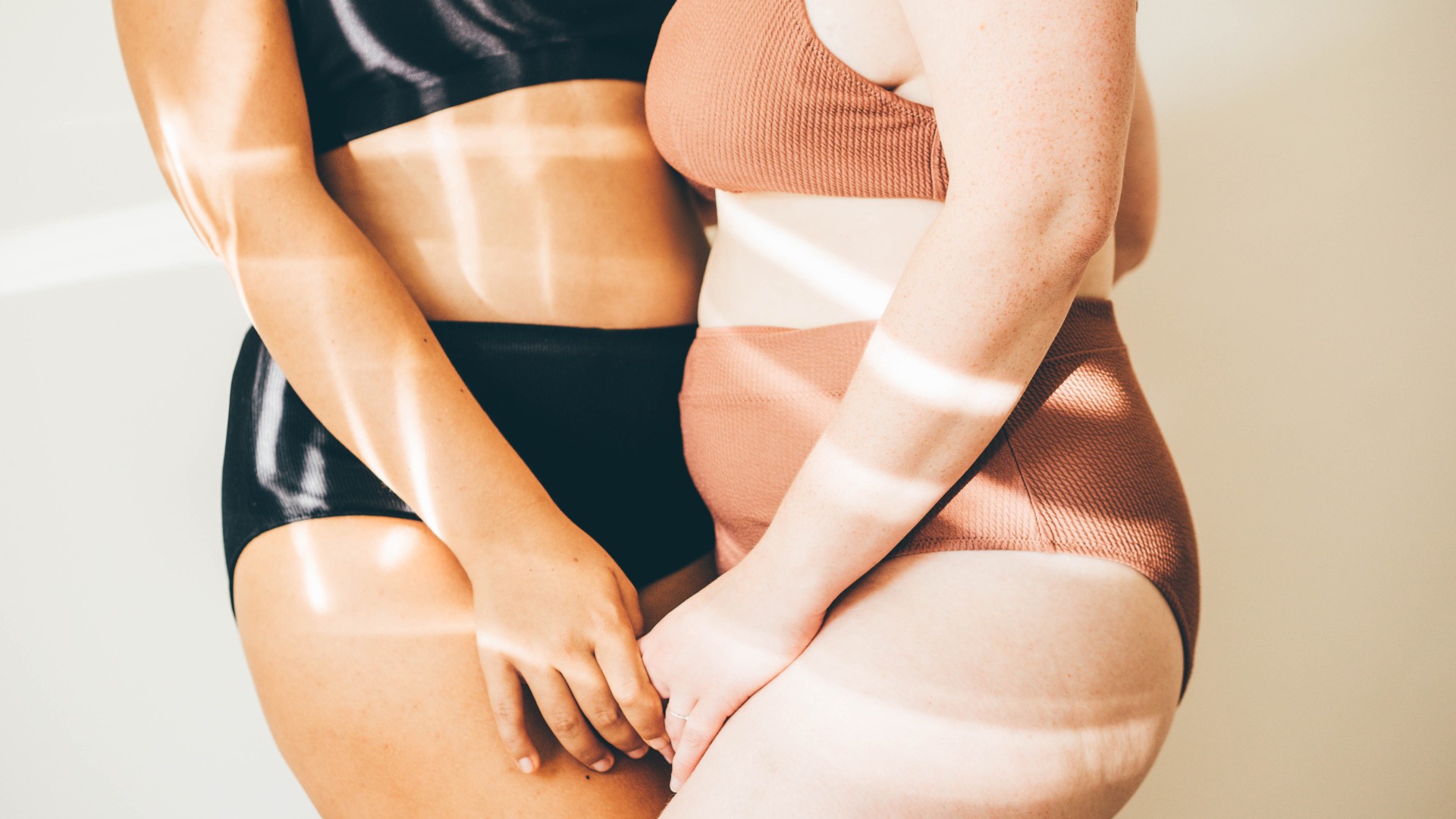Is This $5000 Cellulite Removal Treatment Worth It?
The newest treatment, Avéli, is FDA-approved—and the results are impressive.


Once upon a time, body contouring was only achieved by going under the knife. But cut to today, and the rise of non-invasive tech has completely changed the plastic surgery landscape. Toning devices can occasionally replace tummy tucks, fat freezing has the power to help you shed stubborn pounds, and new advancements have made non-surgical neck lifts a viable option. Cellulite, however, has historically been tricky to treat—until now.
Let me be clear: Butt dimples and skin ripples are a completely normal part of human biology—between 80 and 90 percent of women have cellulite. Cellulite isn't painful or dangerous. There’s absolutely no need to treat it or, quite frankly, even address it. But, for those who want a smoother behind (sign me up), a viable treatment option now exists. It’s called Avéli.
The new treatment is already getting high praise from dermatologists and patients alike, largely because it targets the root cause of cellulite rather than slapping a Band-Aid on the surface. “In my opinion, as a physician who has tested virtually all available modalities to treat cellulite for my patients, Avéli is the most impressive device we have ever had for the treatment of cellulite dimples,” says board-certified dermatologist Dr. Arash Akhavan. “It’s a genuine, long-term, one-and-done solution.”
It comes with a little pain and doctor’s orders to wear yoga pants for the greater part of a week, but the machine can quite literally de-dimple your butt. To get the full down low (read: cost, downtime, recovery, results), read ahead. Top doctors are walking us through the whole process, ahead.
What Is It?
For a very long while, cellulite treatments were fairly non-existent. Topical creams, despite proposed claims, while able to make tiny improvements, are not all too effective at reducing cellulite. Reason being: Cellulite is formed underneath the skin. Collagen bands get pulled down, leaving a surface dimple. Knowing that is what makes Avéli so special—it’s the first treatment to target the root issue.
While it’s only been available for around a year, dermatologists are singing the new tech’s praises. “It is a minimally invasive device that treats cellulite dimples under just local anesthesia,” explains board-certified dermatologist Dr. Arash Akhavan. Unlike competing treatments, Avéli actually targets the root cause of cellulite dimples, “the thickened and constricted bands of collagen that pull down on the skin.”
A photo posted by aveli on
How It Works
As is true with any treatment, the Avéli treatment starts with a consultation. “The areas with the cellulite are marked out before the start of the procedure with the patient standing,” explains board-certified plastic surgeon Dr. Jennifer Levine. Not only does this allow the patient to visualize the transformation, but it also provides the doctor with a precise guide. Next, lidocaine comes into play to numb the areas being treated. Despite this being a minimally invasive procedure, the doctor will still need to make a small incision, typically just at the crease of your butt.
Stay In The Know
Get exclusive access to fashion and beauty trends, hot-off-the-press celebrity news, and more.
Now comes the fun part: A teeny device with a light attached to the tip gets inserted under the skin (my apologies if you’re squeamish) while the physician guides it to the sharpie marks on your tush. “A small hook on the tip of the device secures the collagen band that is causing the dimple,” explains Dr. Akhavan. “Once the physician is certain that they have located the correct collagen band, a tiny blade on the tip of the Avéli device cuts the band to release the cellulite dimple.” Think of it like releasing a rubber band—it snaps right back into a straight line.
That process gets repeated on every eligible dimple. Then the device gets removed, you’ll be stitched up (it’s not a big shebang though, promise), and prescribed a week in yoga pants to minimize swelling. You can go back to regular activities within just a few days, but wait to evaluate your full results for around a month.
Am I a Candidate?
If you can point to a cellulite dimple on your butt or thighs, it’s highly likely you’re a candidate. You should be between the ages of 21 and 55 and in good health too, according to Dr. Akhavan.
The catch: Avéli only works on certain types of dimples. For many women, increased skin laxity, as opposed to a pinched fibrous band, is what makes the skin appear rippled. This loss of collagen and elastin, and resulting less-than-taught skin, can be rooted in age, weight loss, or sun damage. “If you separate skin that is lax with Avéli, it can make the laxity worse,” explains Dr. Levine. The good news: Your board-certified doctor will be able to determine the root cause of your dimples and advise you on treatments accordingly.
What Are the Risks and Side Effects?
While minimally invasive, you’re still signing up for more side effects than a cellulite fighting cream would have on its warning label. “After the Avéli procedure, minor bruising in the areas treated is common,” says Dr. Akhavan. “The incision site in the crease of the buttock is very small and fades with time.” You’ll likely have some soreness as well, however that should fade relatively quickly. As for more severe risks? Thankfully, infection and bleeding are rare, but they are a possibility.
How Much Does It Cost?
Avéli doesn’t come cheap—it’s going to be roughly $3,000 to $7,000 depending on the location and provider. “Cost for the procedure will also depend on the number of dimples being treated,” adds Dr. Levine. The good news: This is a one-and-done treatment; once the fibrous bands are clipped, your cellulite—in that area at least—won’t return.
Alternative Options
If you’re researching cellulite treatments, you’ll likely come across Avéli (obviously), as well as Cellfina, which uses similar technology, and Qwo, an injectable-style cellulite treatment. While they may be option for you, Dr. Akhavan notes that Avéli is both more precise and less likely to cause complications than competitors.
If your cellulite is the result of skin laxity however, none of these will be an option. Instead, you’ll be looking for skin tightening and smoothing procedures, such as Ultherapy or EmSculpt.
Meet the Experts

Arash Akhavan, MD, FAAD is a board certified dermatologist in practice on 60th Street in Midtown Manhattan for the last decade. Castle Connolly Top Doctor Award Winner 2022, 2021, 2020, 2019, 2018, 2017, 2016, 2015, and 2014. Dr. Akhavan is also member of the faculty of The Mount Sinai Medical Center, where he is involved in the education of dermatology residents in their cosmetic and medical clinics. Dr. Akhavan’s particular areas of interest and expertise are in non-invasive and minimally invasive Cosmetic Procedures of the Face, Neck, and Body, as well as in the detection and management of skin cancer and skin lesions.

Dr. Jennifer Levine is one of only a few surgeons who are double-board certified by the American Board of Facial Plastic and Reconstructive Surgery, and the American Board of Otolaryngology-head and neck surgery – giving her a unique knowledge of the face and its underlying structures.
Her philosophy is that every individual has the right to results that enhance one’s appearance, not create a new face. To bring harmony to their facial features, Dr. Levine works closely with each patient to develop an individualized treatment plan that focuses on their needs and unique facial features.
She is an expert in the latest invasive and non-invasive anti-aging treatments that help achieve and maintain the look patients have always wanted.

Samantha Holender is the Senior Beauty Editor at Marie Claire, where she reports on the best new launches, dives into the science behind skincare, and shares the breakdown on the latest and greatest trends in the beauty space. She's studied up on every ingredient you'll find on INCI list and is constantly in search of the world's glowiest makeup products. She's constantly tracking the biggest nail and hair trends to pop up in the beauty space, going backstage during fashion weeks, tracking celebrity looks, and constantly talking to celebrity hair stylists, nail artists, and makeup artists. Prior to joining the team, she worked as Us Weekly’s Beauty and Style Editor, where she stayed on the pulse of pop culture and broke down celebrity beauty routines, hair transformations, and red carpet looks. Her words have also appeared on Popsugar, Makeup.com, Skincare.com, Delish.com, and Philadelphia Wedding. Samantha also serves as a board member for the American Society of Magazine Editors (ASME). She first joined the organization in 2018, when she worked as an editorial intern at Food Network Magazine and Pioneer Woman Magazine. Samantha has a degree in Journalism and Mass Communications from The George Washington University’s School of Media and Public Affairs. While at GWU, she was a founding member of the school’s HerCampus chapter and served as its President for four years. When she’s not deep in the beauty closet or swatching eyeshadows, you can find her obsessing over Real Housewives and all things Bravo. Keep up with her on Instagram @samholender.
-
 In 'Sinners,' Music From the Past Liberates Us From the Present
In 'Sinners,' Music From the Past Liberates Us From the PresentIn its musical moments, Ryan Coogler's vampire blockbuster makes a powerful statement about Black culture, ancestry, and art.
By Quinci LeGardye
-
 Kendall Jenner Has the Last Word on the Best Travel Shoes
Kendall Jenner Has the Last Word on the Best Travel ShoesLeave your ballet flats in your checked bag.
By Halie LeSavage
-
 Prince Harry Gave Nephew Prince Louis an Extremely Rare Five-Figure Gift for His Christening
Prince Harry Gave Nephew Prince Louis an Extremely Rare Five-Figure Gift for His ChristeningUncle Harry for the gifting win.
By Kristin Contino